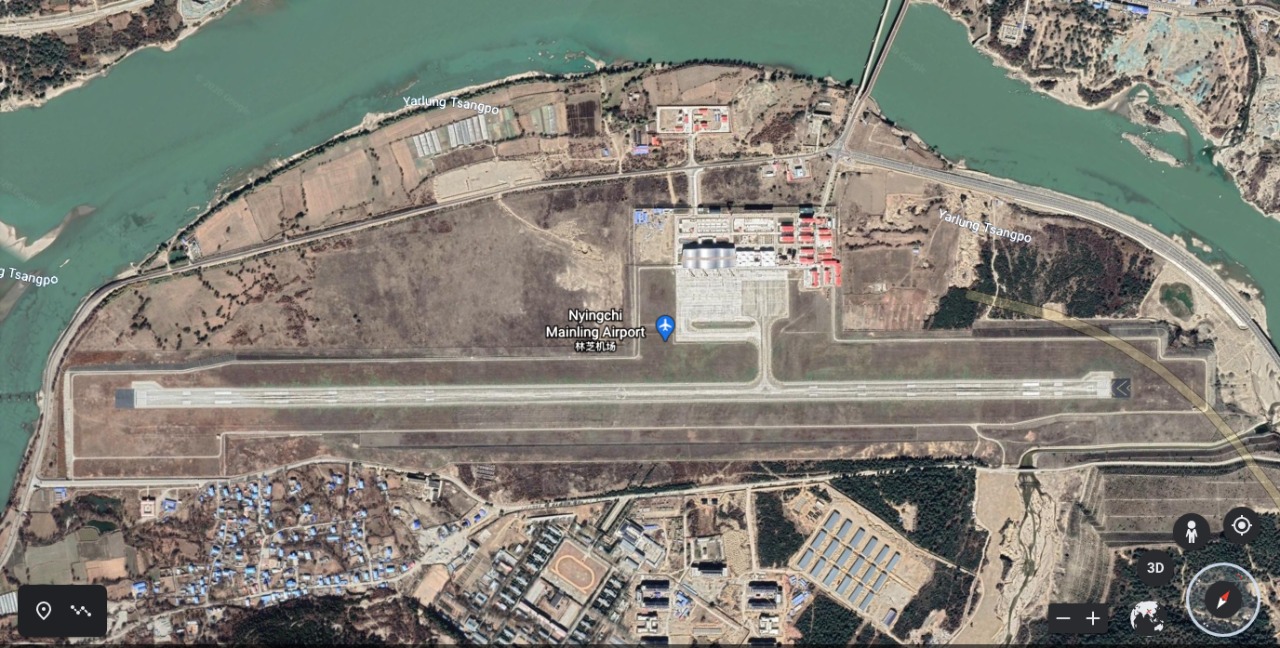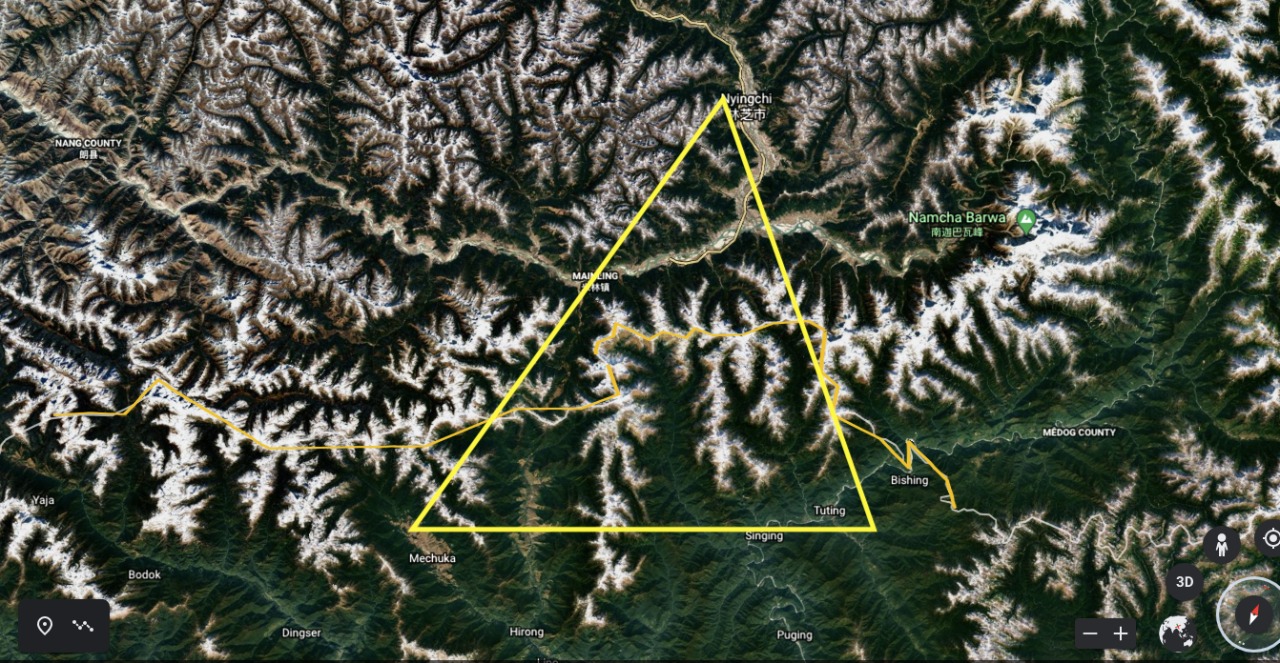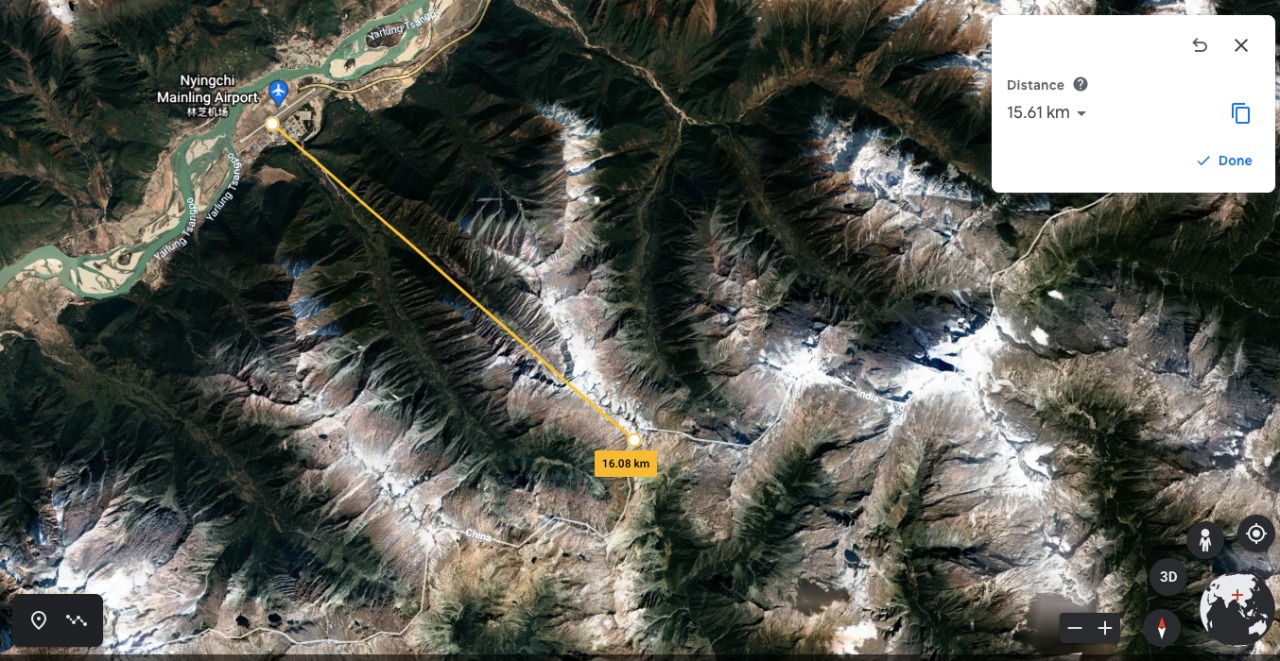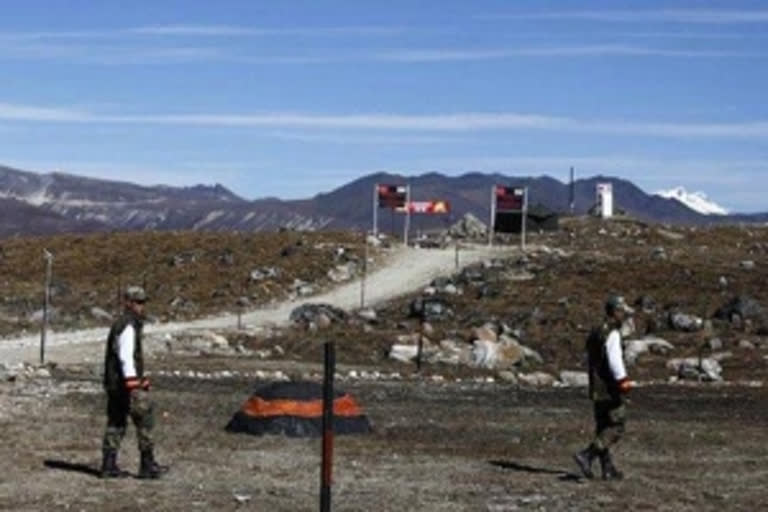New Delhi: A mere 16 km away from the McMahon Line (ML) that separates India and Tibet in the eastern sector in Arunachal Pradesh is a major Chinese People’s Liberation Army (PLA) station that has come up in the last few years in the prefecture-level city of Nyingchi (also called Linzhi) in south-east Tibet.
Just across the last Indian border outpost of Tuting in Arunachal, Nyingchi and one of its county seats at Bayi is home to the 52nd Mountain Motorized Infantry Brigade and the 53rd Mountain Motorized Infantry Brigade both under the Tibet Military District.
In the aftermath of the escalating border row across eastern Ladakh from April-May, reports speak of a much bigger mobilization across Arunachal now that is being ‘mirror-matched’ by India.

The PLA deployments include Combined Army Brigades of the 77 Group Army and Border Defence Regiments among other military formations.
Located on the world-class Lhasa-Yunnan highway, Nyingchi also has a major airport named Mainling which like most Chinese airports is a dual-purpose one although the prime intent is seemingly military with air shelters and logistics for military air assets rapidly coming up.
Nyingchi is also catching up as a major railway junction on the train route to Lhasa.
PROXIMITY TO ML
While all these infrastructural developments are recent ones, the proximity of military bases and launch pads so close to the ML is startling. The immediate advantage from the operational and tactical point of view for the PLA is the easy access to the numerous mountain passes that open up to Arunachal Pradesh.

In 1962, the Chinese army advanced into India mainly from Tawang and Wallong, in the west and east Arunachal respectively.
But with the Lhasa-Yunnan highway running almost parallel to Arunachal’s borders from east to west and with connecting roads to the ML, many more fronts can be opened up in Arunachal.
According to a graphic table in a recently published assessment report by leading US think-tank ‘Stratfor’, of the about 10 PLA Air Force (PLAAF) stations established by PLA across the ML from Sikkim to Arunachal, seven have come up after the 2017 Doklam crisis where Indian army and PLA were engaged in an eyeball-to-eyeball standoff situation for more than 70 days.
These seven, including three PLAAF stations in Nyingchi, include air bases, heliports, air defence and electronic warfare stations.
“Additional air bases, runways and air defence sites would all help China achieve air superiority over disputed areas in future conflicts, as well as provide cover to ground movements to stake actual territorial claims,” the report said.

“While these new developments are geographically focused on the region of current tensions (i.e. eastern Ladakh), Chinese activity across India's entire border will likely drive future expansions of Indian military infrastructure near disputed borders at Sikkim and Arunachal Pradesh,” it said.
Unlike the LAC, the ML is open, porous and unguarded which is because of the thick jungles, difficult terrain and remoteness from the Indian perspective.
THE 1959 CLAIM
Yet, last week, in a seeming attempt to escalate the ongoing standoff situation between the two Asian giants a Chinese foreign ministry spokesman announced China’s mulish opposition to India building military infrastructure in the border areas while also laying claim to territories on the basis of a 1959 claim line proposed by the then Chinese PM Chou En-Lai to his Indian counterpart Jawaharlal Nehru that was rejected by the latter.
What is dangerous about this claim is that all post-1959 negotiations and treaties including the ongoing diplomatic and military negotiations have been negated with one stroke.
China doesn’t recognize the ML nor the state of Arunachal Pradesh and claims it to be part of Tibet and hence a part of China.
Interestingly, after the 2017 Doklam crisis, China has ramped up its military infrastructure near the Doklam area which almost overlooks the 22-km-wide ‘chicken’s neck’ that connects the northeast Indian states to the mainland.
China's recent controversy with Bhutan sparked by a territorial border dispute is perhaps geared towards a conflict aimed at settling territorial claims on Chinese terms and conditions with an eye on Sikkim, Bhutan and the Northeast.
Also Read: 'Indian, Chinese Army working to schedule 7th round of military talks'



